-
Countries
-
Data and Analysis
-
Special Focus
-
Crisis Responses
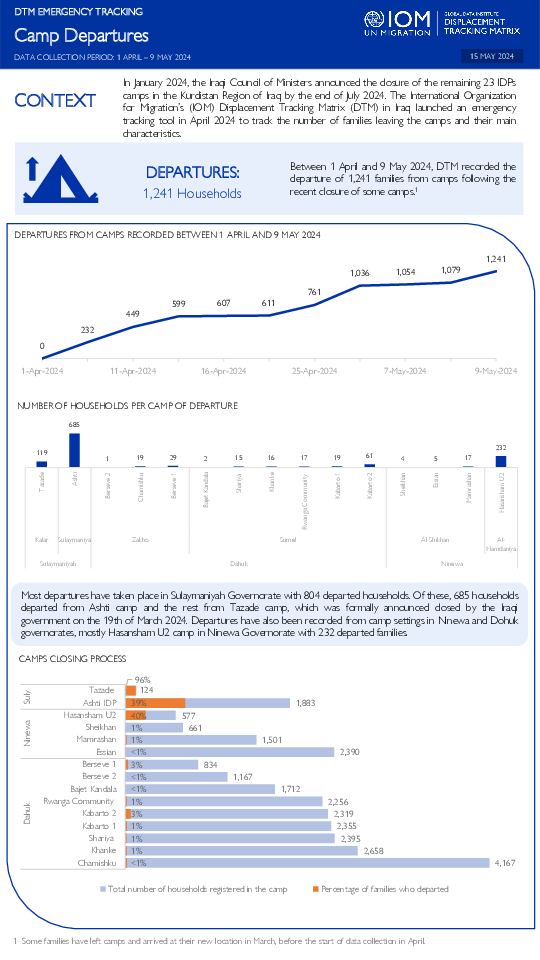
Contact
IraqDTM@iom.int
Language
English
Location
Iraq
Period Covered
Apr 01 2024
May 09 2024
Activity
- Mobility Tracking
- Event Tracking
In January 2024, the Iraqi Council of Ministers announced the closure of the remaining 23 IDPs camps in the Kurdistan Region of Iraq by the end of July 2024. The International Organization for Migration’s (IOM) Displacement Tracking Matrix (DTM) in Iraq launched an Emergency Tracking Tool on Camp departures in April 2024 to track the number of families leaving the camps and their main characteristics.
Between 1 April and 9 May 2024, DTM recorded the departure of 1,241 families from camps following the recent closure of some camps. As of 9 May 2024, DTM recorded the arrival of 993 families out of the total 1,241 departed from camps (80%). Most families arrived to Salah al-Din Governorate (68%) and Ninewa Governorate (30%).
UNHCR and IOM Joint Annual Overview 2023
In 2023, an estimated 212,100 attempts were reported by migrants and refugees to cross the Central Mediterranean Sea from Algeria, Libya, and Tunisia to Europe. This was a 33% increase compared to known departures in 2022.
Of those who attempted to depart in 2023, 71% (151,500) were disembarked in Europe, while 29% (60,600) were rescued or intercepted and disembarked in North Africa (21% in Tunisia, 8% in Libya).
In 2023, more than 3,105 migrants and refugees are known to have lost their lives or gone missing at sea while attempting to cross to Europe along the three Mediterranean routes (eastern, central and western Mediterranean), an increase compared to more than 2,500 deaths recorded in 2022. 61% of the deaths in 2023 took place on the central Mediterranean Sea. According to IOM’s Missing Migrants Project, more than 700 deaths occurred off the coast of Tunisia, more than 680 off Libya and more than 460 off Italian shores. The increasing number and proportion of deaths off the coast of Tunisia is unprecedented in the last 10 years. Notably, more than 1,9008 deaths in the central Mediterranean Sea in 2023 were linked to mass shipwrecks involving the loss of more than 20 lives at sea. However, the real number of dead and missing along these routes is believed to be higher as many incidents go unreported or undetected.
Irregular migration is a complex, dynamic and fragmented phenomenon, and remains difficult to fully picture. Strengthening the understanding of migration routes, trends as well as migrant profiles is critical to protect migrants and support evidence-based policies. The International Organization for Migration's Displacement Tracking Matrix (DTM) and Missing Migrants Project (MMP) collect data on the departures, arrivals, deaths and disappearances of migrants along migratory routes.
This document presents the resumption of migration from the coasts of West Africa to the Canary Islands (Spain). This route, already active in 2006, saw an increasing number of movements in 2023, and in the first months of 2024 there were considerable increases compared to the previous year. The risks, deaths and disappearances following shipwrecks are also on the rise along the Atlantic coasts. Between January and March 2024, 13,115 migrants reached the Canary Islands irregularly after crossing by boat from the coasts of West Africa, an increase of 502 per cent compared to 2023 (2,178 migrants).
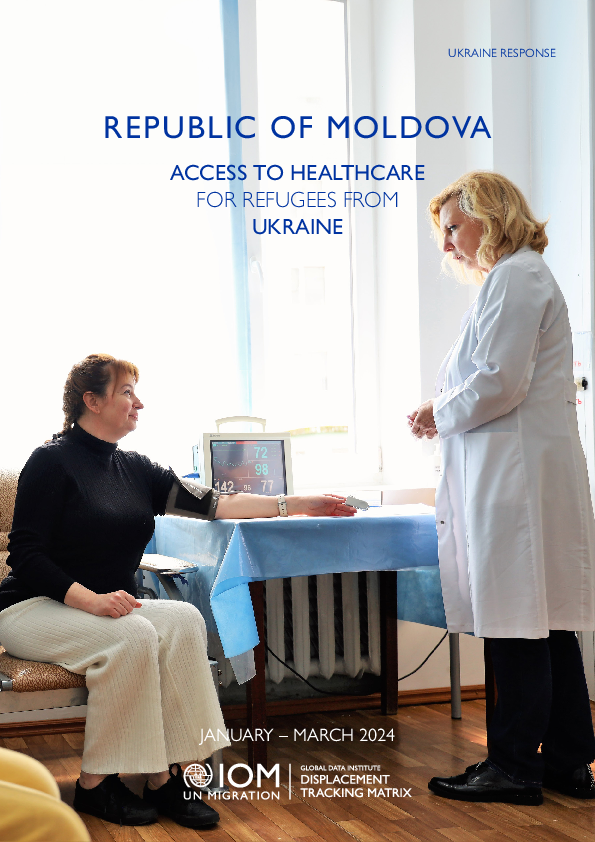
Contact
DTM Europe, DTMMediterranean@iom.int
Language
English
Location
Republic of Moldova
Period Covered
Jan 01 2024
Mar 31 2024
Activity
- Survey
- Flow Monitoring
The IOM’s Displacement Tracking Matrix collected data through Surveys with refugees in the Ukraine Response region from January to March 2024. In the Republic of Moldova, a total of 1,507 surveys were collected. This report focuses on the characteristics, socio-demographic composition, challenges, and needs of the displaced population in the Republic of Moldova, with a particular emphasis on healthcare and the medical needs of the respondents.
Key findings:
- 39% of respondents have or live with people with specific needs or serious medical conditions, while 2% reported living with a pregnant or lactating women.
- Main health issues for women include chronic disease or serious medical conditions (25%), difficulty walking (5%), visual impairment (3%), and hearing impairment (3%).
- Main health issues for men include chronic disease or serious medical conditions (48%), difficulty walking (5%), visual impairment (5%) and hearing impairment (2%).
- Health related needs reported by the respondents include medication (43%), health services (36%), and mental and psychosocial support (2%).
- The most reported barriers to accessing health care were costs (59%), long queues (35%), language barrier (19%), unavailable services (18%), and lack of documents (17%).

Contact
DTM Europe, DTMMediterranean@iom.int
Language
English
Location
Republic of Moldova
Period Covered
Jan 01 2024
Mar 31 2024
Activity
- Survey
- Return Intention
- Flow Monitoring
IOM’s Displacement Tracking Matrix (DTM) collects data on Ukrainian nationals and Third-Country Nationals (TCNs) that were crossing back to Ukraine from or through the Republic of Moldova, either for temporary stay or prospective return. The survey focuses on the return intentions, duration of displacement, destinations, assistance, and experiences of unequal treatment of the respondents. A total of 1,800 surveys were collected between January and March 2024.
Key findings:
- 87% of Ukrainian respondents planned to go for a short visit, 7% intended to stay in Ukraine (prospective returnees), while 6% were not sure about their intentions.
- The majority (69%) been residing in the Republic of Moldova, 9% in Romania, 5% in Germany. The remaining 17% stayed in other countries.
- 83% were going back to their Oblast of origin, while 17% were going back to a different Oblast.
- 43% had been displaced between January and June 2022.
- 67% crossed back to Ukraine twice or more since 2022. 10% crossed more than 10 times.
- 79% of prospective returnees and 91% of short-term visitors reported having received assistance since their displacement.
- Main priority needs that were cited by respondents include financial support (43%), medicine and health services (27%) and personal safety and security (22%).
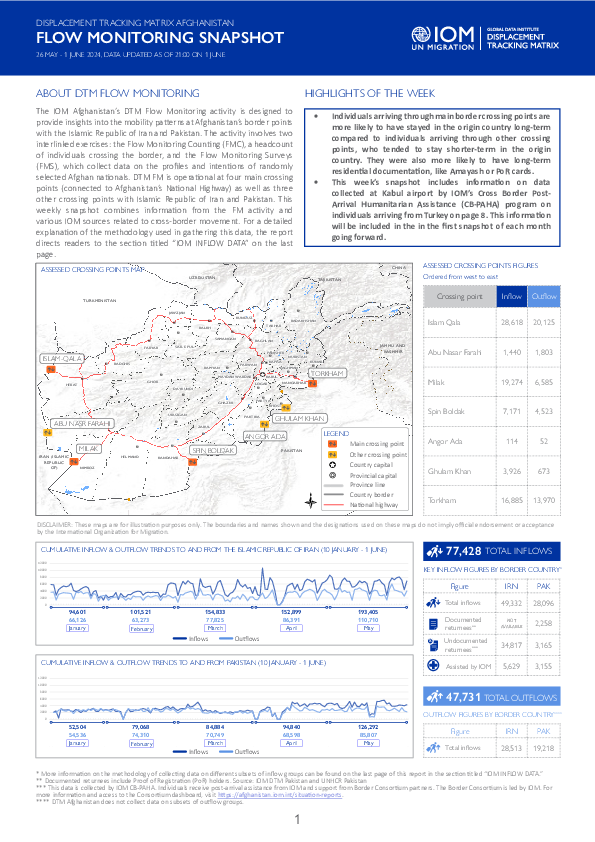
Contact
DTMAfghanistan@iom.int
Language
English
Location
Afghanistan
Period Covered
May 26 2024
Jun 01 2024
Activity
- Survey
- Flow Monitoring Survey
- Flow Monitoring
The IOM Afghanistan’s DTM Flow Monitoring activity is designed to provide insights into the mobility patterns at Afghanistan’s border points with the Islamic Republic of Iran and Pakistan. The activity involves two interlinked exercises: the Flow Monitoring Counting (FMC), a headcount of individuals crossing the border, and the Flow Monitoring Surveys (FMS), which collect data on the profiles and intentions of randomly selected Afghan nationals. DTM FM is operational at four main crossing points (connected to Afghanistan’s National Highway) as well as three other crossing points with Islamic Republic of Iran and Pakistan. This weekly snapshot combines information from the FM activity and various IOM sources related to cross-border movement. For a detailed explanation of the methodology used in gathering this data, the report directs readers to the section titled “IOM INFLOW DATA” on the last page.
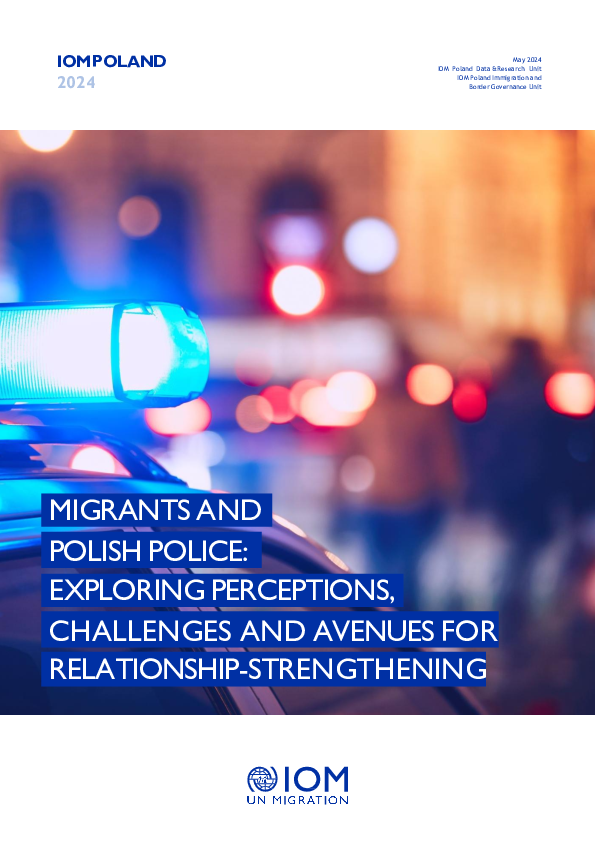
Contact
DTM Europe, DTMMediterranean@iom.int
Language
English
Location
Poland
Period Covered
Dec 01 2023
Apr 30 2024
Activity
- Survey
- Community Perception
This study aims to provide insights into interactions, perceptions, and potential areas for improvement in the relationship between non-Ukrainian migrants in Poland and Polish law enforcement with a specific focus on the Polish Police. The report encompasses our main research findings as well as recommendations for both Polish law enforcement's engagement with non-Ukrainian migrant communities and future humanitarian programming.
Disclaimer: This report was published by IOM Poland's Data and Research Unit, and is not based on DTM tools or methods. The report is featured here for convenience of dissemination and based on its relevance to the Ukraine Regional response.
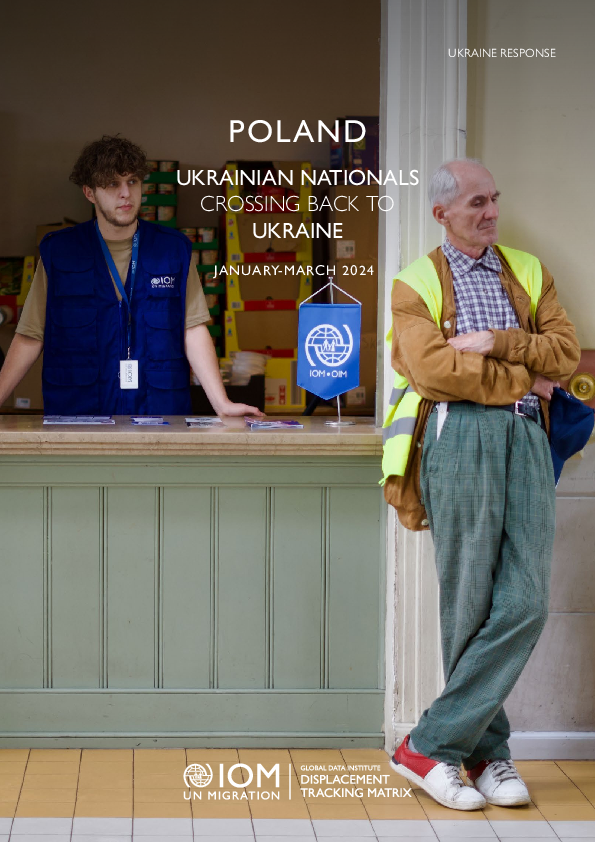
Contact
DTM Europe, DTMMediterranean@iom.int
Language
English
Location
Poland
Period Covered
Jan 01 2024
Mar 31 2024
Activity
- Survey
- Return Intention
- Flow Monitoring
IOM’s Displacement Tracking Matrix (DTM) collected data on Ukrainian nationals and Third-Country Nationals (TCNs) who crossed back to Ukraine from Poland, either for a temporary stay or permanent return after a period of displacement abroad. The survey focuses on the return intentions, duration of displacement, destinations, assistance, and experiences of discrimination of 361 Ukrainian respondents surveyed between January and March 2024.

Contact
DTM Sudan; dtmsudan@iom.int
Language
English
Location
Sudan
Snapshot Date
Jun 11 2024
Activity
- Mobility Tracking
- Baseline Assessment
This report reflects data corresponding to Sudan Mobility Update (2) dataset. The dataset is available here.
Overview:
This report provides an overview of the total population of internally displaced persons (IDPs) in Sudan, including those displaced both before and after the onset of conflict on 15 April 2023.
The displacement crisis in Sudan has been unfolding for over two decades, with roots in the Darfur conflict beginning in 2003. Prior to the onset of conflict on 15 April 2023, Sudan already hosted an estimated 3,820,772 IDPs. The majority (80%) reportedly originated from Darfur states, and most were initially displaced between 2003 and 2010. Of these IDPs, many experienced secondary displacement after 15 April 2023. Since 15 April 2023, an estimated 7,262,187 individuals were displaced internally within Sudan — including those who experienced secondary displacement.
When accounting for those displaced both before and after 15 April 2023, DTM estimated that Sudan hosted a total of 10,095,054 IDPs.
Key Findings:
- An estimated total of 10,095,054 IDPs were displaced across 8,239 locations, in 183 localities in all 18 states in Sudan.
- An estimated 7,262,187 individuals were displaced internally within Sudan since 15 April 2023.
- An estimated 26 per cent of IDPs who were initially displaced prior to the onset of current conflict experienced secondary displacement since 15 April 2023.
- Approximately 2,170,592 individuals crossed borders into neighbouring countries since 15 April 2023.
- The top states of origin among IDPs were Khartoum (36%), South Darfur (21%), and North Darfur (12%).
- The states hosting the most IDPs were South Darfur (18%), North Darfur (13%) and Central Darfur (9%).
- Over half (55%) of IDPs were reportedly children under the age of 18-years-old.
Note: The number of IDPs displaced post 15 April 2023 (7,262,187 IDPs) includes the estimated 987,905 IDPs who were initially displaced prior to 15 April 2023 and experienced secondary displacement since 15 April 2023. DTM Sudan defines an internally displaced person as any person who has been forced or obliged to flee from their habitual residence due to an event dating from 2003 onwards.
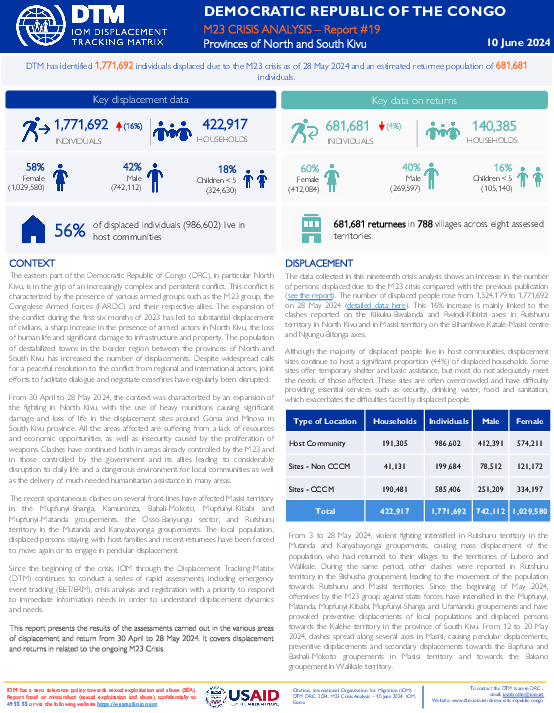
Contact
DTM DRC, iomdrcdtm@iom.int
Language
English
Location
Democratic Republic of the Congo
Period Covered
Apr 30 2024
May 28 2024
Activity
- Mobility Tracking
- Event Tracking
The eastern part of the Democratic Republic of Congo (DRC), in particular North Kivu, is in the grip of an increasingly complex and persistent conflict. This conflict is characterized by the presence of various armed groups such as the M23 group, the Congolese Armed Forces (FARDC) and their respective allies. The expansion of the conflict during the first six months of 2023 has led to substantial displacement of civilians, a sharp increase in the presence of armed actors in North Kivu, the loss of human life and significant damage to infrastructure and property. The population of destabilized towns in the border region between the provinces of North and South Kivu has increased the number of displacements. Despite widespread calls for a peaceful resolution to the conflict from regional and international actors, joint efforts to facilitate dialogue and negotiate ceasefires have regularly been disrupted.
From 30 April to 28 May 2024, the context was characterized by an expansion of the fighting in North Kivu, with the use of heavy munitions causing significant damage and loss of life in the displacement sites around Goma and Minova in South Kivu province. All the areas affected are suffering from a lack of resources and economic opportunities, as well as insecurity caused by the proliferation of weapons. Clashes have continued both in areas already controlled by the M23 and in those controlled by the government and its allies leading to considerable disruption to daily life and a dangerous environment for local communities as well as the delivery of much needed humanitarian assistance in many areas.
The recent spontaneous clashes on several front lines have affected Masisi territory in the Mupfunyi-Shanga, Kamuronza, Bahali-Mokoto, Mupfunyi-Kibabi and Mupfunyi-Matanda groupements, the Osso-Banyungu sector, and Rutshuru territory in the Mutanda and Kanyabayonga groupements. The local population, displaced persons staying with host families and recent returnees have been forced to move again or to engage in pendular displacement.
Since the beginning of the crisis, IOM through the Displacement Tracking Matrix (DTM) continues to conduct a series of rapid assessments, including emergency event tracking (EET/ERM), crisis analysis and registration with a priority to respond to immediate information needs in order to understand displacement dynamics and needs.
This report presents the results of the assessments carried out in the various areas of displacement and return from 30 April to 28 May 2024.

